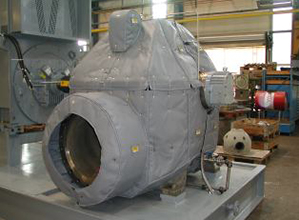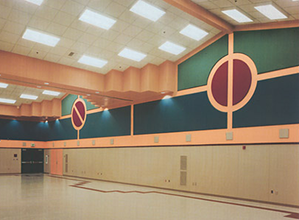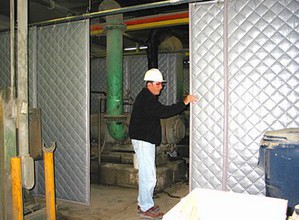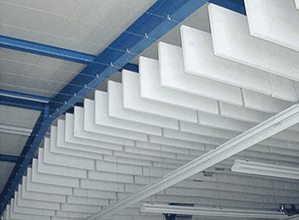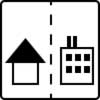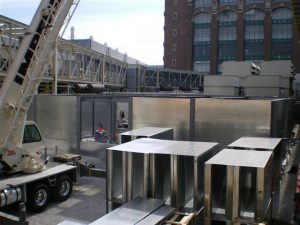The following is a list of commonly used technical terms and their definitions as they relate to fan & blower silencers.
Insertion loss is reported in units of decibels (dB). It is a measure of the true attenuation or noise
reduction of a silencer. Insertion loss can be directly subtracted from the noise levels of a fan
or other noise maker that the silencer is attached to achieve the resultant, quieted noise levels.
Generated noise is what happens due to air flowing through the silencer and is of concern in the
supply air mode only. That is, supply air enters the silencers at one face velocity (fpm) and then
speeds up as it moves past or between the silencer baffles or silencing bullet. Downstream (exit)
of the silencer, the air expands to fill the space.
The space can be the inside of ductwork, a stack or worst case the atmosphere (termed an abrupt expansion). This expansion causes silencer generated noise. It is like blowing through a whistle or straw. The air speeds up then expands. This expansion causes sound (generated noise). Therefore, you ‘don’t get something for nothing’. With a silencer under positive/forward/supply airflow you get attenuation (insertion loss) and generated noise.
One final issue, generated noise and insertion loss are both a function of pressure drop. The
higher the silencer pressure drop, the greater the generated noise levels and insertion loss
values. As long as you have a pressure loss equal to or less than 0.35 inch WG, generated noise is
not a problem.
DIL: Dynamic Insertion Loss of noise through the silencer. It is expressed in decibels (dB) at each frequency octave band (Hertz or Hz).
Face velocity: Ratio of Airflow rate (ACFM) over duct cross-section area in Ft2.
Flanking of duct: Noise transmitted in duct steel material effectively limit silencer noise
performance to 50 dB approximately in standard untreated sheet metal ducts.
Forward flow: Airflow in the silencer is in the same direction as the noise propagation.
Frequency: Silencer noise performance is expressed for each of 8 frequency octave bands,
numbered 1 for 63 Hz (Hertz), 2 for 125 Hz, 3 for 250Hz, 4 for 500Hz, 5 for 1000 Hz, 6 for 2000
Hz, 7 for 4000 Hz and 8 for 8000 Hz.
Pressure drop: Of gas flow through the silencer, in inches water gauge, assuming it is mounted in straight duct with same cross section for a minimum length of 3 diameters on both ends, at 70
degrees F.
Reverse flow: Airflow in the silencer is in the opposite direction to the noise propagation.
Self-Noise: Noise generated in the silencer and caused by the gas interaction with the silencer. It
is expressed in sound power in dB and it varies with velocity of gas flow.
Unit dimension: Select this second cross-sectional dimension as needed.
Unit size: Silencer internal units determine cross-sectional dimension b, b may be u/2, u, 2u, 3u etc.
